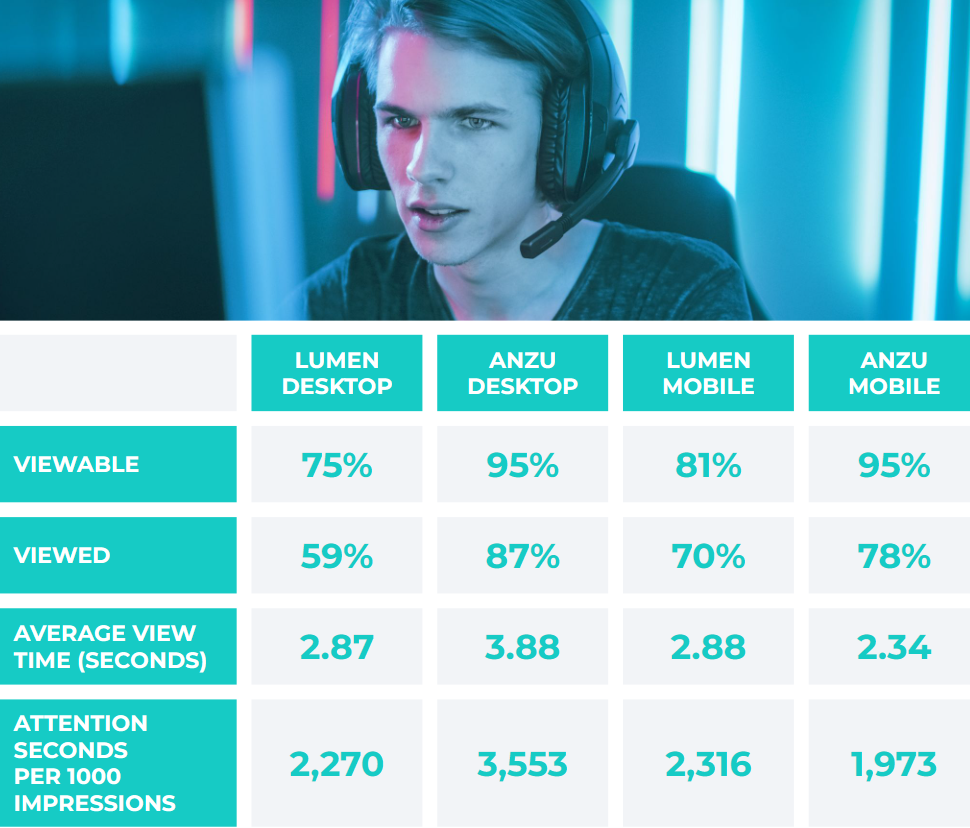Cannes 2023: The New Age of Attention-First Context


With around 15,000+ registered attendees from 90 countries and many more attendees who are visiting yachts, suites, and event activations across the city, it can be hard to pin down any one “theme” for the Cannes Lions International Festival of Creativity.
On the ground at Cannes, Lumen delivered a number of panels and talks about attention technology. There was also a lot of talk about sustainability, retail media, and, of course, AI’s impact on the future of advertising. In our opinion, what’s next – no matter what category – is context. Rather than investing in consumer identity, advertisers must start shifting dollars to investing in context.
As Lumen CEO Mike Follett explained in an interview with Seedtag, “Attention is context. Ads have to put in the right place and the right time in the right environment.”
Attention can change throughout the day, the device, the ad format, the channel – even if the consumer stays the same. This is partly why contextual advertising performs better than cookie-based advertising already and that difference will become even more pronounced as more advertisers adopt attention-first advertising.
“Cookies aren’t going away,” Mike said. “They’re gone.”
At Lumen, we believe that attention technology can lead to a better internet and better advertising by helping businesses drive results based on how people actually see the screen – whatever the context.
Here’s what Lumen covered last week at Cannes and how context comes into play:
SAWA, the cinema advertising body, kicked off the sessions at the Debussy Theatre at the Palais with an event about cross-screen attention. Citing recent research conducted on behalf of NCM, Lumen CEO Mike Follett spoke about the context of cinema advertising. “No other media tells you to turn off the other media before watching the ads!” he pointed out. “A big screen, an absence of distractions, and intention to view: these are the factors that make Cinema the daddy of media.”
The session, hosted by Kathryn Jacobs of Pearl and Dean, also heard from Ukomwa Ojo, formerly CMO of Amazon Studios and now CEO of Zaia Ventures on the relative impact of cinema advertising and other screens while Jelle Demanet, of neuro-marketing agency Apollo8, on the context of cinema advertising drives emotional engagement.

In a panel discussion with PwC, Lumen CEO Mike Follett explained how, as the only attention technology company validated by PwC, Lumen’s solutions have been found to drive higher engagement and conversion by allowing advertisers to optimize for attention, not just viewability.
“The goal is to show that more attention means more sales,” he told the audience. As Mike explained, when advertisers optimize for viewability, they’re optimizing for load times, not true view time. With attention technology, it’s possible to optimize for what really gets seen, where it gets seen, and for how long – and that’s what drives sales.
In this case, attention is just another word for the context of the consumer behavior and, with attention technology, advertisers can finally measure and optimize for that context.
Download the full PwC Report here.
At Brand Innovators, Lumen’s Scott Linzer talked to Carole Diarra, Global VP of Marketing at UGG about the future of marketing. Scott explained that Lumen’s eye-tracking technology can kickstart a new generation of transparency for advertising, because it allows advertisers to finally see what consumers see. With attention scores for each ad unit, publishers and advertisers can have a standard metric to help optimize the entire experience – and the context of each experience.
Most importantly, attention can help validate media buying strategies with a new level of insights for both investments and ad creative, showing what domains drive the most attention and how different creative elements drive the consumer’s visual journey.
As part of The Women in Programmatic Network sessions during Cannes, Lumen’s Niki Chana talked about how advertisers can integrate sustainability into their current ad systems. Greener ads can drive greener business results, too, as Lumen has found with our partnership with Scope3. Not only that, premium websites with better content tend to benefit from this eco-friendly model as advertisers optimize for attentive impressions that drive view time, not just impressions and delivery.
“For me, sustainability is about understanding the impacts,” Nikki explained. Just like attention technology revealing the behavior of how people really see the screen and the ads on it, green ad-tech is offering transparency into the carbon emissions from ad systems – making it easier to measure, optimize, and offset the carbon footprint of campaign and publisher alike.

Last week, we announced our findings with Anzu about the state of in-game advertising in the comprehensive report, “Are You Paying Attention: How Gaming Sets a Higher Bar for Advertising Engagement.”
Research shows that nearly three-quarters (73%) of consumers skip ads out of habit. Gaming is a much different environment and presents a huge opportunity to advertisers. As the report shows, in-game ads are part of an immersive experience that connects advertisers to a leaned-in audience that are more likely to be engaged and present when ads are viewable.
On a panel with dentsu, Lumen, CIMM, Livewire, and Anzu, we discussed the key findings of the report, including:
Our work with Anzu shows that reduced attention span might be a myth – it’s just a matter of creating an immersive, in-context experience that’s worth your audience’s attention. And that might mean rethinking your relationship with both audience and audience context.
Contextual advertising isn’t new, but contextual attention-first advertising attention is just getting started. With Lumen’s predictive model of attention, advertisers can now build campaigns based on attention per impression, including % viewed and view time, for each ad and each domain. Lumen offers a new layer of understanding into the context of each ad and connects advertisers to an audience’s context without depending on third-party identifiers.
All of this means that, at the end of the day, building a contextual advertising strategy means building a human-first ad strategy by understanding that environment, not identity, is what advertisers need to understand most.